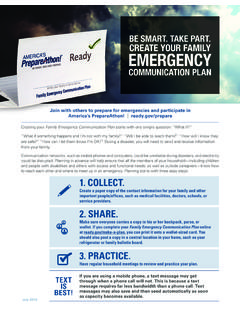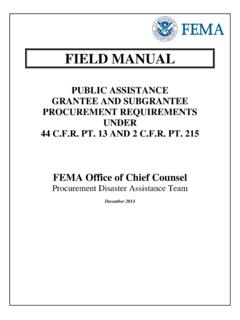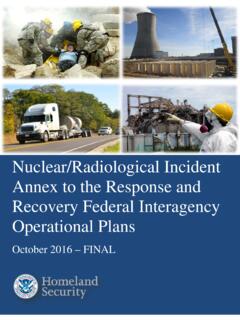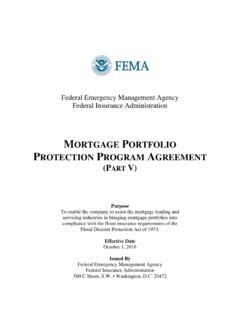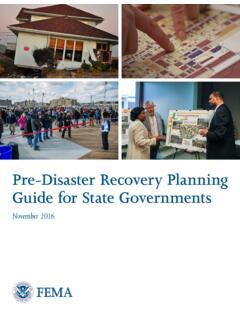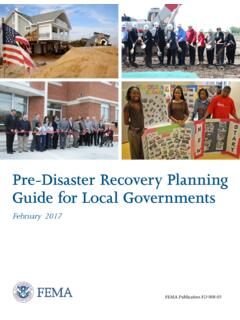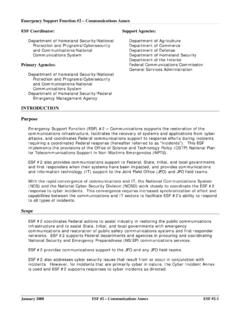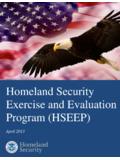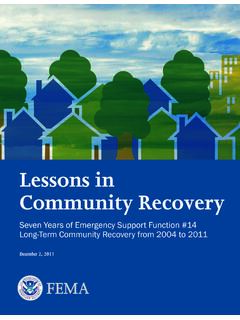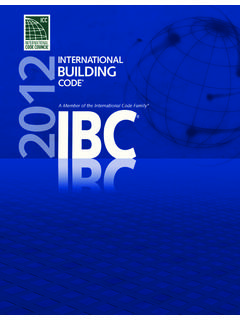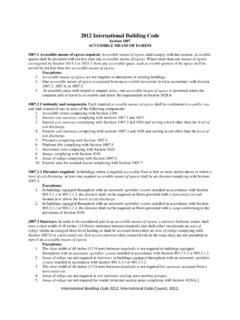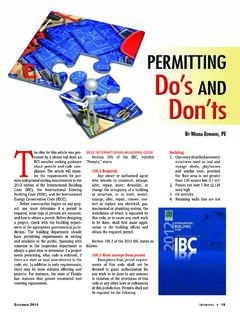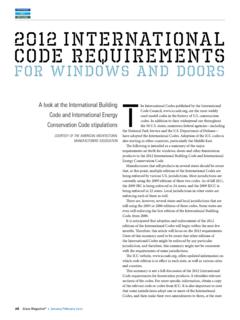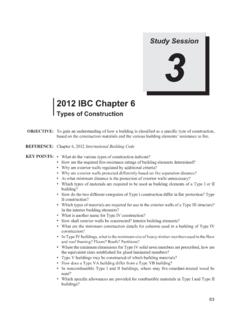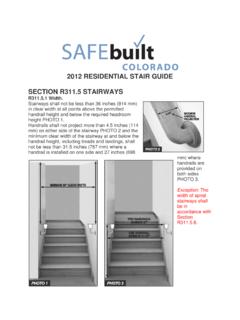Transcription of NFIP- 2012 I-Codes and ASCE 24 Checklist - …
1 NFIP Checklist : 2012 I-Codes and ASCE 24-05 (September 2013) Page 1 Purpose of this Checklist . This Checklist will guide floodplain managers, building officials and designers as they compare the requirements of the National Flood Insurance Program (NFIP) to the flood provisions of the international building code (IBC), the international Mechanical code (IMC), the international Plumbing code (IPC), the international Fuel Gas code (IFGC), the international Residential code (IRC), the international Existing building code (IEBC)
2 , and the referenced standard, ASCE 24-05 Flood Resistant Design and Construction. Most states adopt the IMC, IPC, and IFGC either separately or by reference in the IBC; some states adopt the Uniform Mechanical code and the Uniform Plumbing code (published by IAPMO). Although the model codes are not available in view-only form online, many states make their building codes available online. This Checklist is based on the standard Checklist used by FEMA and states to review local floodplain management regulations/ordinances to determine whether such regulations and ordinances are complete for the purpose of participating in the NFIP.
3 Pertinent Federal regulations are in 44 CFR Part 60 (criteria for land management and use) and 44 CFR Section (definitions). Floodplain Management and building Codes. With the inclusion of NFIP- consistent provisions in the international code Series ( I-Codes ), states and communities have two primary tools to regulate development in flood hazard areas: (1) building codes that govern the design and construction of buildings and structures; and (2) either IBC Appendix G or separate, but coordinated, local floodplain management regulations.
4 These tools are designed to work together to result in buildings and structures, and all other development, that are resistant to flood loads and flood damage. NFIP- 2012 I-Codes and ASCE 24 Checklist IBC (and Appendix G), IMC, IPC, IFGC, IRC, and IEBC NFIP Checklist : 2012 I-Codes and ASCE 24-05 (September 2013) Page 2 Relationship between the I-Codes and Local Floodplain Management Regulations or IBC Appendix G. When states and communities adopt and enforce the flood provisions of the I-Codes , they must ensure full consistency with the NFIP requirements for buildings and structures.
5 Of particular note, care must be taken to ensure that: 1. Work on existing buildings and structures is regulated (see notes below); 2. Buildings, structures and facilities that a state may specify are exempt from the requirements of the code (most common are agricultural structures) and work that is explicitly exempt from the requirement to obtain a permit (see IBC and IRC ) are still required to be regulated in accordance with the NFIP if located in flood hazard areas. Buildings, structures, and facilities exempt from the requirements of the code must either be addressed by local regulations or by amending Appendix G.
6 One way to effectively address this shortfall is to specify in local regulations or in Appendix G that buildings and structures in flood hazard areas that are exempt from the code shall comply with ASCE 24; 3. State or local amendments, if any, do not weaken the flood provisions of the model codes; 4. If Chapter 1 of IBC and Chapter 1 of IRC are not adopted by the state or local jurisdiction, then the administrative provisions related to flood hazard areas contained therein must incorporated in locally-adopted administrative provisions or by ensuring that all necessary administrative provisions are contained in IBC Appendix G; and 5.
7 If IBC Appendix G is not adopted, requirements comparable to those in Appendix G are adopted in local floodplain management regulations. With the caveat that the above-listed items need to be examined to ensure full consistency with the NFIP, there are three ways that the I-Codes are used to meet the requirements for participation in the NFIP: 1. Adopt the IBC with Appendix G and IRC, and for existing buildings, either retain IBC Chapter 34 or adopt the IEBC. 2. Adopt code -coordinated companion floodplain management regulations and adopt the IBC (without Appendix G) and IRC, and for existing buildings, either retain IBC Chapter 34 or adopt the IEBC.
8 3. Adopt one or more of the I-Codes and continue to use NFIP- compliant, locally-adopted stand-alone floodplain management regulations, allowing the more restrictive prevails concept to apply. The caution is that having two regulatory instruments govern the same activities can result in conflicting provisions and perpetuate confusion. States need to determine if this is acceptable, especially those states that specify that only the building code governs the design and construction of buildings which may effectively void building requirements in local floodplain management regulations.
9 Communities with higher standards, especially communities that participate in the NFIP Community Rating System, should determine if a conflict between the requirements of the building codes would effectively void locally-adopted higher standards. In general, allowing known conflicts to remain unresolved is discouraged because it could result in regulations that are unenforceable. NFIP Checklist : 2012 I-Codes and ASCE 24-05 (September 2013) Page 3 Notes on Existing Buildings. The IBC includes Chapter 34, Existing Buildings.
10 Some states and communities rely on this chapter to regulate work on existing buildings and do not adopt the IEBC. Some states and communities adopt IEBC while also retaining IBC Chapter 34, and other states and communities adopt IEBC and delete IBC Chapter 34. The IRC applies to the construction of new dwellings as well as work on existing dwellings, including alteration, movement, enlargement, replacement, repair, equipment, use and occupancy, location, removal and demolition ( Scope). For completeness, the Checklist includes citations from both IBC Chapter 34 and IEBC.
